The flag of Andorra stands as a symbol of national pride, reflecting the country’s heritage and European ties.
Its unique design and vibrant colors capture Andorra’s character and the essence of its mountainous beauty and highlight Andorra’s distinct identity and enduring spirit amidst the Pyrenees.
Andorra Flag
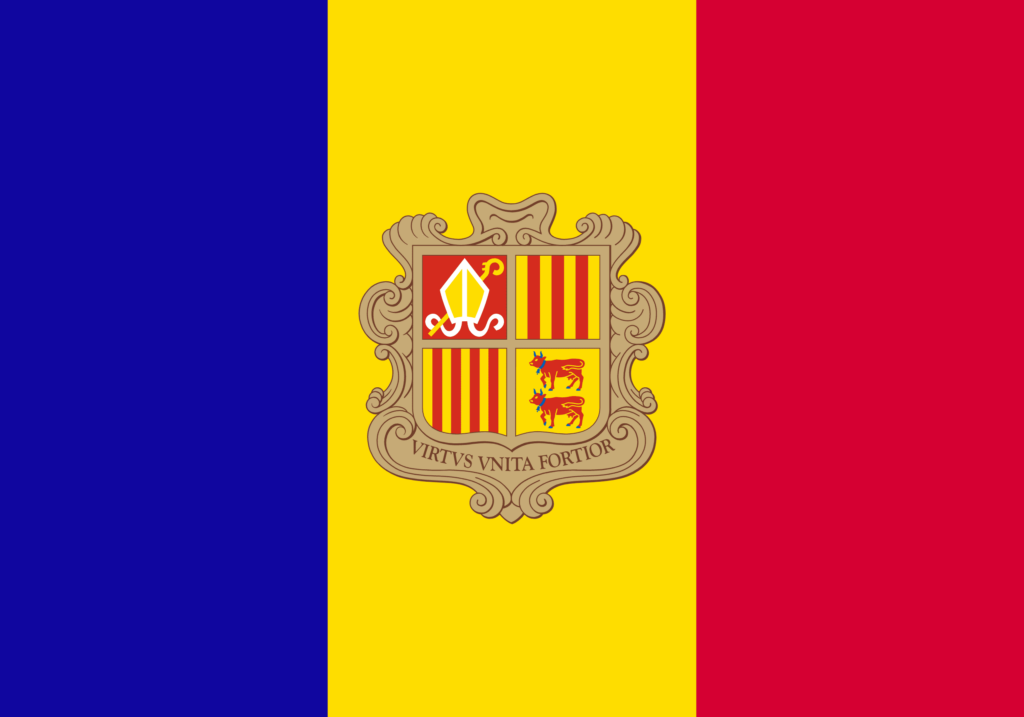
The Andorran flag is distinguished by three vertical bands, with the national coat of arms embedded in the central band. The design is a nod to Andorra’s bond with its neighbors and the historical and political nuances of its past.
Central to the flag, the coat of arms bears emblems representing the cultural and administrative heritage of the region, including the Bishop of Urgell and emblems of historic Catalan territories.
Andorra Flag: Color Palette
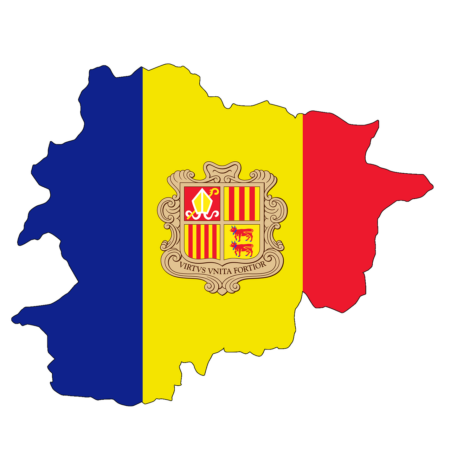
Andorra Flag Emoji: 🇦🇩
The color palette of the Andorran flag is a harmonious blend that serves as an immediate identifier of the nation’s character and diplomatic bonds.
The selection of colors is purposeful, resonating with a theme that will be explored in the symbolism each hue represents. This palette defines the flag’s aesthetics and sets the stage for a deeper narrative within each color.
Meaning of Each Color
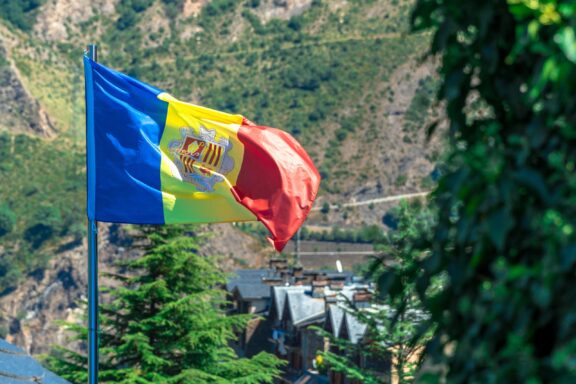
Blue
The blue strip of the flag mirrors the vastness of the Andorran sky and the cherished water bodies dotting the landscape, symbolic of the nation’s Pyrenean majesty and the historical significance of its waterways. It also evokes Andorra’s liberty and serenity as an independent entity.
Yellow
The central band of yellow shines brighter and broader, symbolizing the affluence and the luminous essence of the Christian faith, central to Andorra’s societal core.
It also represents the gleaming sun that bathes the country’s peaks, a symbol of cheer, energy, and the hopeful disposition of its citizens.
Red
The red band carries the bravery and Andorran fortitude. It recalls the historical ties with France and Spain, manifest in their common use of red. This hue commemorates the principality’s storied connections and the tenacity and vigor of such alliances.
Coat of Arms of Andorra
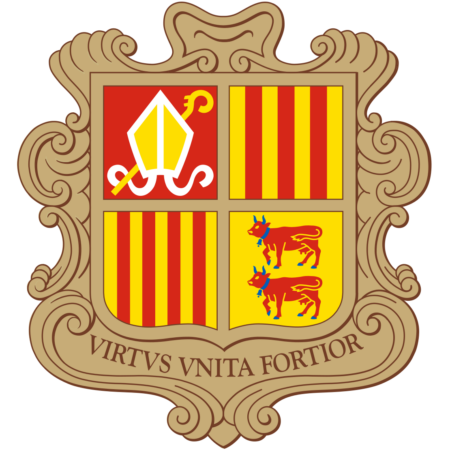
The Andorran emblem celebrates its lasting independence and the complex historical ties that define its existence. It symbolizes the fusion of cultural and political connections, deeply rooted in tradition and Andorra’s distinct co-principality status.
The coat of arms, in its entirety, captures the nation’s respect for its past, the significance of its partnerships, and the collective values that have navigated its historical journey.
It stands as a symbol of the principality’s dedication to community and unity, serving as both a formal symbol and a lighthouse of national principles, reinforcing the shared identity of its people.
Historical Evolution and the Meaning Behind Changes
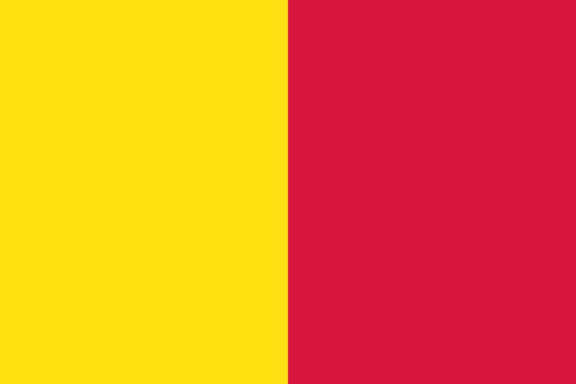
The Andorran flag, distinguished by its tricolor bands, has maintained a consistent design since its official adoption in 1866, reflecting the nation’s enduring values and historical constancy.
The only significant alteration to the original design occurred in 1969 when the national coat of arms was embedded in the central yellow band, affirming Andorra’s unique character among nations sharing similar tricolor patterns.
This key change underscored Andorra’s sovereign narrative and political distinctiveness, celebrating its co-principality and deep-seated traditions. The integration of the coat of arms enhanced the flag’s distinction and reinforced the principality’s narrative of unity and independent spirit.
The progression of the flag demonstrates a greater emphasis on stability rather than transformation, representing Andorra’s consistent leadership and the persistent nature of its country.
This steadfastness in design mirrors the principality’s historical journey, subtly commemorating its ability to preserve its heritage and autonomy through the ebb and flow of European history.
Overall Symbolic Meaning of the Flag
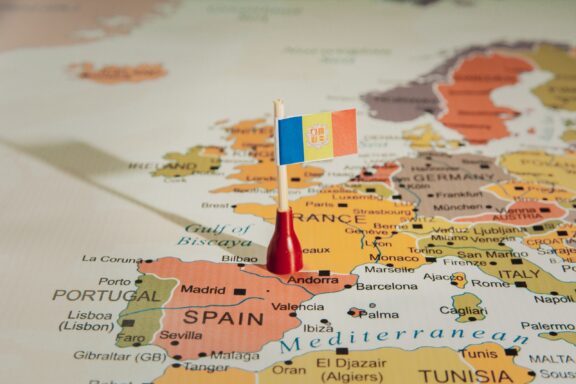
The flag of Andorra stands as a tapestry that interweaves the principality’s political uniqueness and its rich cultural tapestry into a singular emblem. Including the coat of arms is a seal of its historical supremacy and the enduring principles that define its nationhood.
Similar Flags to the Flag of Andorra
Exploring the world of flags reveals a tapestry of designs that often share common elements due to historical ties, cultural exchanges, or symbolic meanings.
Let’s delve into a countdown of flags that bear a resemblance to Andorra’s emblematic banner.
Moldova
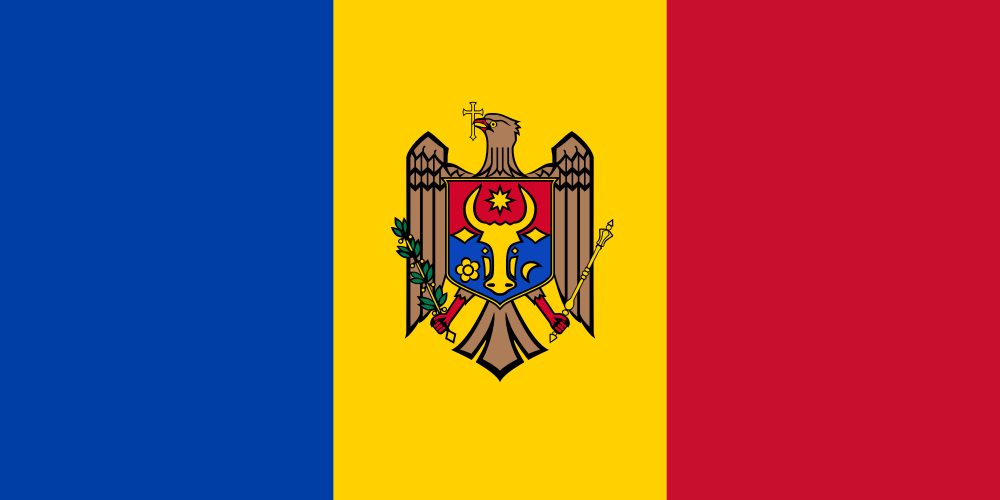
Due to the vertical blue, yellow, and red tricolor, Moldova’s flag resembles Andorra’s. While it lacks the coat of arms in the central band, the colors are similar.
This similarity is coincidental, as no significant shared history or cultural exchange influenced the designs; it’s more a parallel evolution in the world of flags.
Romania
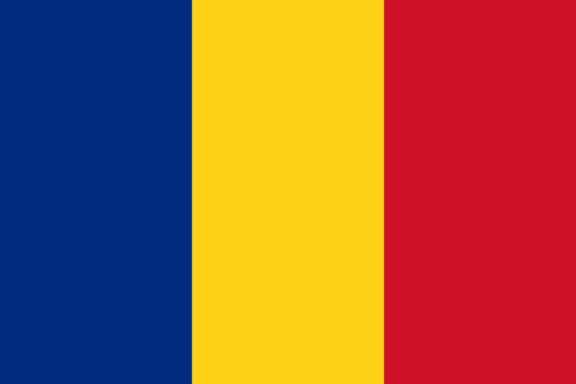
Romania’s flag also displays the same tricolor of blue, yellow, and red bands, but like Chad, it does not feature a coat of arms. The resemblance is due to the widespread influence of the tricolor pattern as a symbol of liberty and revolution in Europe rather than direct cultural ties.
Chad
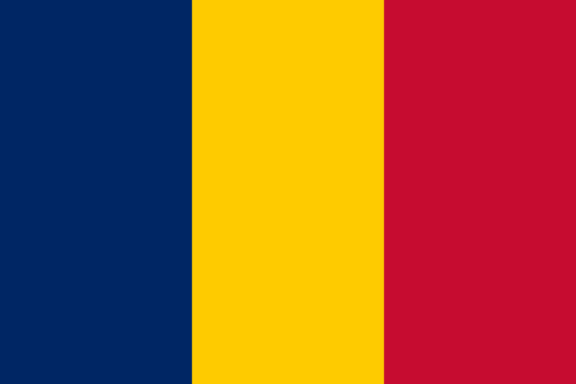
The flag of Chad is strikingly similar to Andorra’s, featuring the same set of vertical blue, yellow, and red bands. The main distinction is the absence of any emblem on Chad’s flag.
Despite this visual affinity, the reasons for the color choices in each flag are rooted in separate historical and cultural contexts.
Conclusion
The flag of Andorra encapsulates the nation’s pride and values, marking its unique identity among world flags. To Andorrans, it symbolizes a rich heritage and unity, a resonant emblem of their small but steadfast community. It serves as a vibrant reminder of Andorra’s past and a beacon for its future, deeply revered by its people.
Image Sources and Copyright Information
- Andorra Flag Waving with Mountainous Background: © Inosensius Julio Tolo/Shutterstock
- Flag Pin on Andorra Map Location: © GR.Stocks/Shutterstock